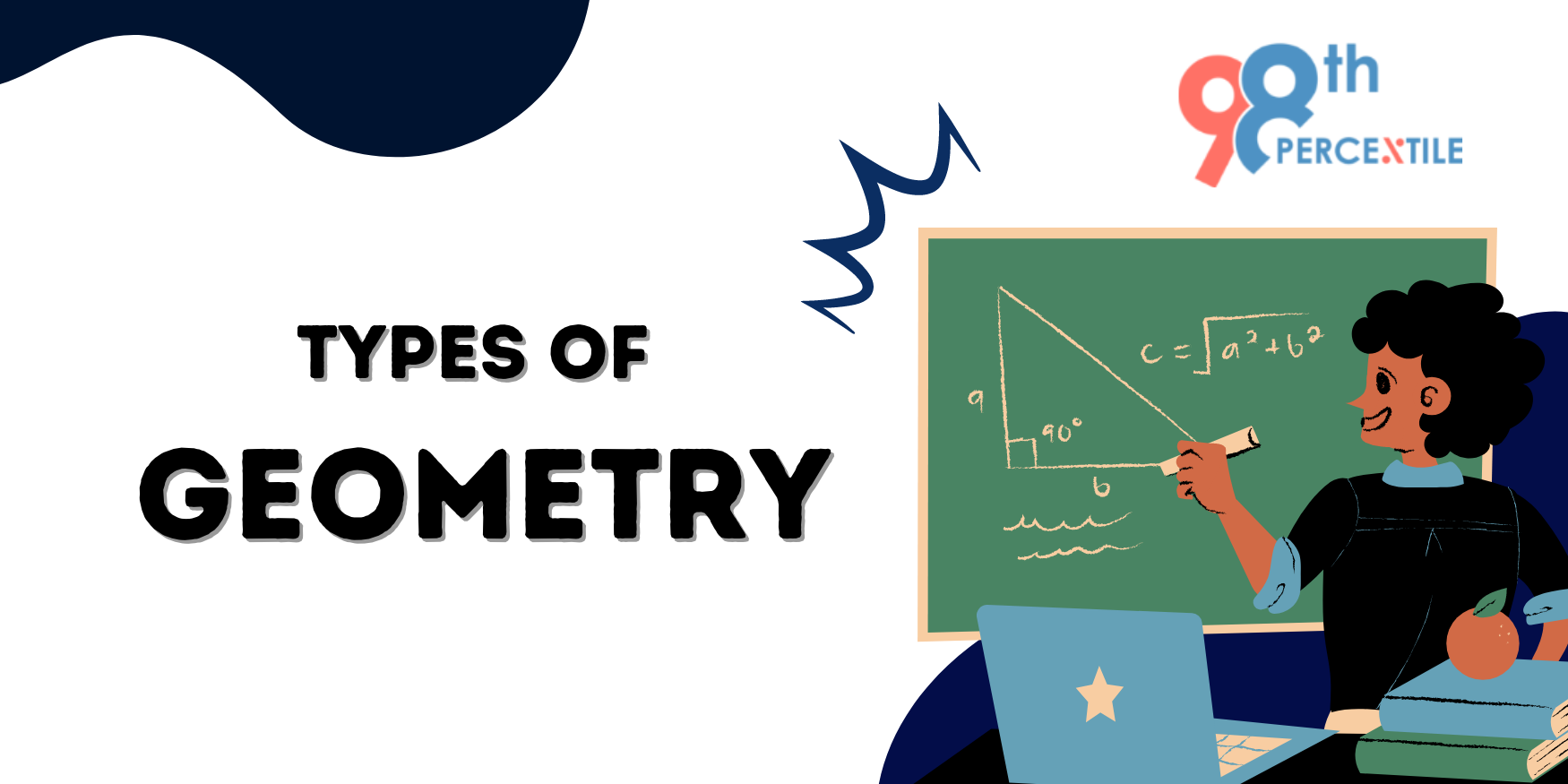The term "geometry" is derived from the ancient Greek word "geometria," meaning measurement (-metria) of earth or land (geo). It is a branch of mathematics that explains the relationship between shape, size, and numbers.
Ancient civilizations such as the Indus Valley civilization and Babylonia, about 3000 BC, are credited with laying the groundwork for geometric laws and formulae ideal for planning, construction, astronomy, and mathematical problem solving based on the concepts of length, area, angle, and volume.

In the middle ages, mathematicians and philosophers from different cultures continued to use geometry to create a model of the universe. Studies by the French mathematician and philosopher René Descartes (1596-1650) of coordinate systems to define the positions of the points in 2D and 3D space led to the birth of the field of analytical geometry.
The concept of the surface of a sphere, where the principles of Euclidean geometry do not apply, was recognized. Nonetheless, the discovery of non-Euclidean geometry established wider fundamental truths involving numbers and geometry.
In 1899, notable German mathematician David Hilbert (1862-1943) developed advanced-level axioms, establishing a new era around the 20th and 21st centuries, where axioms were applied to various mathematical cases.
Geometry Timeline
- 3000 BC – Practical geometry of the ancient world, like Pyramids
- 300 BC – Spherical geometry
The notion was codified in a book titled "spherics" by Greek astronomer Theodosius of Bithynia (169-100 BC), which combines earlier work on spherical astronomy by Euclid (325-265 BC) and Autolycus of Pitane (360-290 BC).
It estimates areas and angles on spherical surfaces used in astronomical mapping, such as star or planet locations.
- 500 BC: Pythagoras of Samos named the "Pythagoras theorem," which calculates the hypotenuse (the longest side) of a right-angled triangle from the lengths of the other edges, which would sum to 180 degrees or two right angles.
- 4th century BC:Geometric tools to measure, sketch, and build geometric forms and constructions, can be traced back to the ancient Egyptians and Greeks.
The Greek philosopher Plato (428-347 BC) stated that the tools of geometry should be limited to a straightedge and a compass. Some examples are building a line that is twice as long as another line or a line that divides an angle into two halves.
- 360 BC: Platonic solids
Plato introduced the five regular convex polyhedra (polygonal bodies), in which five forms may be produced by combining comparable faces along the edges: tetrahedron (four faces), cube (six), octahedron (eight), dodecahedron (twelve), and icosahedron (twenty faces).
- 240 BC – Archimedean solids
Developed by Greek mathematician Pappus of Alexandria (320 AD), Archimedean solids are described as 13 convex polyhedrons, which are uniform polygons with congruent edges and corners.
- 1619 – Kepler's polyhedron
German mathematician Johannes Kepler (1571-1630) discovered a new class of polyhedra, known as the star-polyhedron ("Kepler-Poinsot polyhedral"), stated the small stellated dodecahedron, the great stellated dodecahedron, the great dodecahedron, and the great icosahedron.
- 1637 – Analytical geometry
"La Geométrie," a work on coordinate systems, gave rise to the study of geometric shapes and their properties in the field of analytical geometry, coordinate geometry, or Cartesian geometry. René Descartes is considered the "father" of analytical geometry due to his contributions to the discipline.
- 1858 – Topology
Topology studies the features of geometrical objects and spaces that remain unchanged while continuously deformed (Möbius strip). Leonard Euler, a Swiss mathematician, is the father of modern topology.
- 1882 – The discovery of the Klein bottle by German scientist Felix Klein (1849-1925), which has a one-sided surface without any surface borders, thus proving geometry beyond three dimensions. The Klein bottle is a mathematical persona of a character with no standard boundaries, as a loop that is twisted and linked to itself. It can't be immersed in three-dimensional space without intercrossing itself.
- 20th century – Fractal geometry
Computers have led to the discovery of fractals, which are precise model equations that repeat at different sizes and yield designs such as the Mandelbrot set, which is shown graphically.
Benoit Mandelbrot (1970s), a mathematician born in Poland, is widely regarded as the pioneer of fractal geometry, which is now widely used in a variety of current disciplines, including physics, biology, computer graphics development, and chaotic systems study.
Computational geometry allowed us to solve problems such as the four-color theorem, highlighting various regions within a complex mapping by four colors. Francis Guthrie (1852) introduced the four-color theorem, and Kenneth Appel and Wolfgang Haken(1976) verified it by computer. They used them in the study of cartography mapping and other spatial systems.
Types of Geometry

- Euclidean geometry
It analyzes shapes in two and three dimensions according to the rules established by Euclid.
- Non-Euclidean geometry
Use of various axioms: Notable examples are hyperbolic geometry (use of axioms for parallel lines) and elliptic geometry (use of axioms for the sum of the angles in a triangle).
- Projective geometry
It deals with geometric shapes, and its alternation of length-to-width ratios (the ratios of distances) remains the same. They are used to analyze perspective drawings and graphics forms (art, architecture, and photography).
- Topological geometry
It refers to the unchanging attribute of geometric objects when exposed to continuous deformations such as stretching or bending, which is frequently employed to study subatomic structures and cosmological properties.
- Differential geometry
It is a calculus-based research field in geometry, including curves and 3D surfaces. They are applied in investigating spatial phenomena and studying the properties of dynamic physical systems.
It has numerous applications in engineering, surface qualities, designing, and analyzing complex systems like airplanes and cars.
- Algebraic geometry
Algebraic geometry applications include algebraic curves and surfaces, as well as algebraic varieties of high-dimensional spaces defined in algebraic equations such as parabolas, planes, ellipsoids, lines, circles, and space-time curvature.
Book a two-week free trial today, at no risk to you. Our online math tutors work alongside common core standards and will identify your child's strengths and weaknesses and work with them to build confidence so they can solve Geometry problems easily. With us, your child will be a full grade ahead of where they are now in just six months, guaranteed.

 Students/Staff
Students/Staff Parents
Parents ElevatEd
ElevatEd


-Nov-18-2025-03-57-47-3267-AM.png?width=360&length=360&name=401x226%20(6)-Nov-18-2025-03-57-47-3267-AM.png)



-Jul-22-2025-03-16-52-8797-AM.png?width=360&length=360&name=401x226%20(6)-Jul-22-2025-03-16-52-8797-AM.png)






